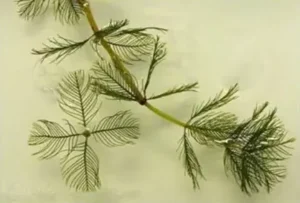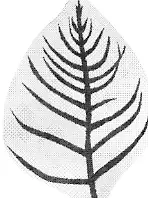Aquatic Invasive Species (AIS) in Duck Lake
Eurasian water milfoil (EWM) was first discovered in June 2005 by a biologist who was surveying the lake. During the first year, the Duck Lake Nuisance Aquatics Committee was formed by several property owners. They sent a letter to all property owners, informing them about the problem and asking for donations toward an herbicide application, which was done in the fall. On-water training sessions were held to teach our property owners, as well as others in our township, how to locate and identify EWM.
In the beginning, a certified biologist surveyed the lake in the spring, and if necessary, a certified applicator was hired to treat affected areas the following spring.
The Duck Lake Nuisance Aquatics Committee (now called the Duck Lake Milfoil Committee) also developed several tactics in its effort to keep EWM under control:
- The lake was divided into approximately 16 sections, and property owners who volunteered were responsible for monitoring a specific section.
- EWM plants were recorded with GPS, and marked with a milfoil buoy to deter boat traffic in those areas.
- One property owner was trained to become a certified scuba diver, so individual plants that were found could be pulled before they multiplied.
- Property owners donated a stripped-down pontoon, which was retrofitted for diving.
- Grant applications were submitted.
- We became involved with other groups concerned with invasive species: Invasive Species Control Coalition of Watersmeet (ISCCW) and the Western Upper Peninsula Cooperative Weed and Pest Management Area (WUPCWPMA). The ISCCW is an exemplary organization of volunteers in Watersmeet Township and our valued partner in this fight against EWM. They have helped offset the costs of surveys and treatments, and they have done many projects to increase public awareness. In addition, they supply a biologist who helps survey our lake if requested, and they periodically station an educator and boat washer at our public access.

Eurasian Watermilfoil
- Usually 12 to 21 leaflet pairs
- Leaves are usually limp when out of the water
- Delicate feather-like leaves with squared-off shape
- Leaflets mostly the same length
- Leaves arranged in whorls (circles) of 3 to 5 around stem
- Long, spaghetti-like stems, sometimes pinkish
- Stems often branch near the surface
Northern Watermilfoil
- Usually 7 to 10 leaflet pairs
- Leaves usually stiff when out of the water
- Rigid feather-like leaves with Christmas tree shape
- Lower leaflets usually quite long
- Leaves arranged in whorls (circles) of 4 to 6 around stem
- Stems usually whitish or whitish green
- Stems don’t typically branch near the surface

